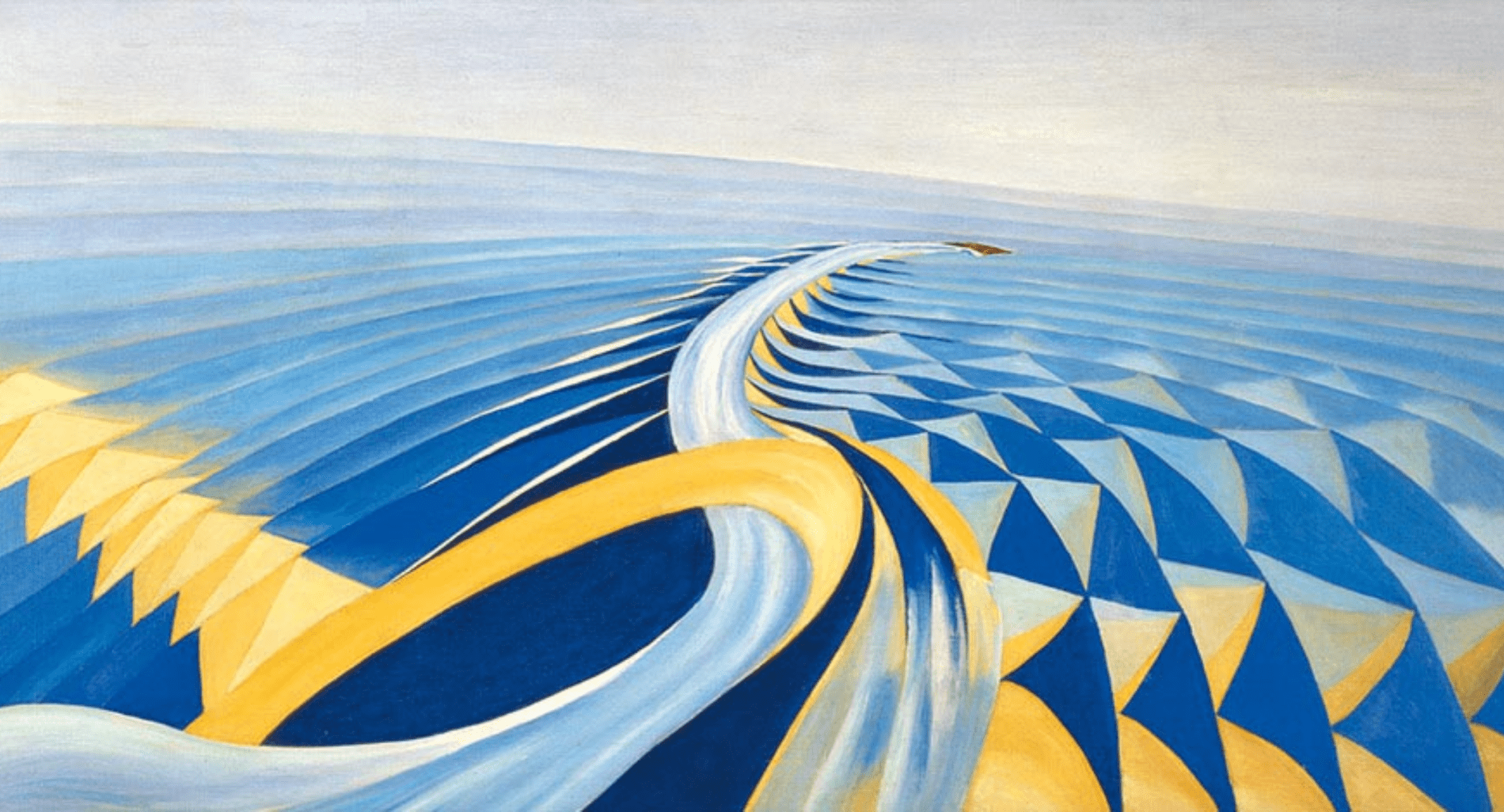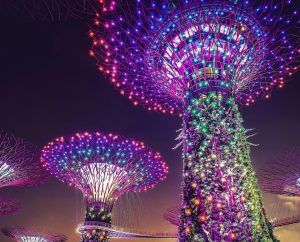About me
Vedanti Joshi
I am a Senior Product Designer at Zalando Payment Services, inclined towards solving problems keeping empathy, intuition, simplicity, creativity and compassion in mind. I believe in collaboration over heroism. I have experience with conducting Design Sprints, facilitating collaborative design thinking exercises, applying service design methods, conducting qualitative research, and of course, designing digital experiences in the B2B, B2C and Enterprise domains.
What are ambient experiences?
“An ambient user experience is a digital experience that relates to the immediate surroundings. Ambient user experiences occur when technology systems seamlessly interact with users, based on their needs and the context of their requests”. – Ambient user experiences: Interact with devices
If you have watched “The Jetsons” cartoon series, you are already familiar with comical versions of the space-age ambient user experiences. In “The Jetson”, you see housekeeping performed by a robot maid named Rosie, who handles chores that are otherwise impossible by the home’s numerous “push-button” conveniences. Similarly, today we have voice assistants like Amazon’s Alexa, Google Home, or Apple’s Siri, which have brought digital butlers into our homes, allowing us to do everything from calling an Uber to ordering food without reaching for a smartphone or tablet.
Experiences where data flows across multiple platforms and touchpoints, eliminating the boundaries of our physical and digital environments, are not far. But before we get there, there are a lot of challenges that designers need to address. There are still gaps between the online and offline worlds, between products and devices that hinder the user experience and cause friction.
Customers own multiple devices and use them interchangeably throughout the day. Each of these devices has a critical role, and it is crucial to understand their roles and how they exist together with other devices. Understanding multi-device usage and its connectivity can help build the foundation for a continuous design experience. It enables a brand to show customers what it stands for by providing a unified, consistent, and connected experience across all touchpoints.
From my experience as a Senior Product Designer at Zalando, one of Europe’s leading online platforms for fashion and lifestyle, we strive hard to understand the different relationships between connected devices as well as how our customers relate to them in order to create a continuous experience across all touchpoints, physical or digital.
Designing an ambient & continuous user experience
In a recent project, we explored the option for customers to buy items on Zalando, try them on at home, and only pay for the things they actually love and decide to keep. We call this Buy Now Pay Later (BNPL). The key customer benefit is to enable customers to try the items they would like without a big dent in their wallet. They have more time to evaluate the items and to decide which of them they want to keep.
As a part of our design process, we broke down the broad user journey of shopping online into key moments focussing on –
- Needs: What are the users’ goals and needs that the Buy Now Pay Later ecosystem could address?
- Customers: What are the customers’ needs in terms of interactions and touchpoints?
- Emotions: What are our customers feeling at each stage of these interactions and touchpoints?
In addition to user journey maps, we also analyzed these key moments through the lenses of –
- Devices: What are the dominant devices for each of these interactions?
- Business impact: How does this help Zalando?
Here are some examples of how customers might interact with different devices at different moments in the BNPL journey and what emotions these interactions might create –
- Searching for and exploring products at home on a laptop, feeling optimistic and relaxed
- Checking product information and comparing prices in-store on a smartphone, feeling informed and in control
- Ordering from Zalando’s website on your laptop where you have your payment preferences saved e.g. PayPal, feeling optimistic and relaxed
- Authorizing the payment from your phone PayPal app, feeling secure
- Receiving shipping tracking information via email on your laptop and following delivery updates from your phone, feeling excited about the purchase
- Writing product reviews on your tablet, feeling happy or perhaps frustrated about your purchase
Addressing emotions and providing a continuous user experience, helps Zalando increase engagement, build customer loyalty and trust, as well as reduce the possibility of returns.
Designs by Product Designer, Mert Kütükoglu
Understanding customer interactions with a variety of devices throughout the end-to-end experiences helped us identify important issues and the friction points that could break the buying and brand experience continuity. For example, what if the customer forgets to pay for the items they have kept? How and where would we notify people? Problems like these turn into design opportunities. We outlined a reminder mechanism that avoids the risk of late payments and allows the user to enjoy the purchase journey. These reminders are designed to be present across various touchpoints and reduce user anxiety about timely payments while being non-intrusive and easily accessible at the time of need.
Identifying gaps and opportunities like these were an essential step for us in setting up the product’s direction for the ambient future. As we dig deeper, we expect to find more experience areas that would benefit from a more granular multi-device treatment. With an understanding of the current experience and the direction of the product, we can tackle these moments better.. For example, designing for ambient experiences pushes us to think about experiences that are accessible and inclusive of all user groups. It opens us up to the possibility of having shopping experiences controlled by voice and gestures that are not screen-based. Designing for niche user groups not only pushes us to explore new technologies but also helps us bring the joy of shopping to a larger user base.
Practicing Ambient User Experience Design
The development of ambient experiences isn’t going to happen overnight. As technologies grow in complexity, designing for continuity gets more challenging. While the line “across devices, time and space” sounds like an introduction to a science fiction movie, it’s something designers have tackled before.
“Continuous design, supported by multiple connected devices, enables us to rethink user flows we might have taken for granted, break them down into smaller steps, and then reconstruct them to create better, richer, more tailored user experiences.”
Designing Multi-Device Experiences
As we start designing, questions like “What if my users are missing one of the devices in the experiences? Will this break the continuity and ruin the experience?” will arise. The answer is – it shouldn’t! While it would be fantastic if the users have all the devices in your product ecosystem, this is unlikely to be the case. Instead, by designing for consistency and continuity, we can build ambient experiences utilizing the devices they do have.
An excellent example of a consistent experience is how seamlessly Apple devices work together. For example, you can use the Notes App on your Macbook, iPhone, iPad, and Watch. You make a note, and it’s available and actionable across all your devices, but you don’t need to have all the devices to benefit. Here we see that aiming for consistency across all the platforms in the user journey is a good first step.
Presenting similar experiences across various devices and porting the same content and core features in a uniform style is one way to bring continuity across the product. This ensures that the entire product experience can be consumed in a familiar way on any device and at any time during the user journey. Once you build the base of a consistent experience, you can work on tailoring it to specific devices and touchpoints, advancing the user toward a common goal.
Designing for ambient experiences is relatively new at Zalando. However, bits of these experiences are embedded in our users’ digital and physical environments. A future where these come together to form ambient experiences is not far because, after all, George Jetson was born in 2022!! ?
References:
The future is ambient by Artur Lugmayr (2006)
What is Ambient Customer Experience? (2016)
Design Futures Research (2018)
Global Perspectives (2021)
Designing Multi-Device Experiences
Cover image:
Continuity. Credits: Benedetta – Speeding motorboat




